See also:
Nagoya TV Tower, Nagoya, c. 1955
“Of all the many structures built in Tokyo during the post-war years, one stood out specifically as a monument to the reconstruction itself. This was Tokyo Tower, the instantly famous landmark opened to considerable fanfare in late 1958.”
– Tokyo, the Changing Profile of an Urban Giant, Roman A. Cybriwsky, 1991
“I begin to wonder about Tokyo Tower itself, although almost completely without authority. When it opened in 1958, the landmark was a powerful symbol of Japan’s rebuilding after the devastation of World War II and the nation’s increasing integration into the world community via trade and other contact.
“Tokyo Tower also symbolized the rebirth of optimism among the Japanese public as the postwar economy began to grow. It was featured recently [2011] as a half-completed structure in the upbeat film Always – 3-chome no Yuhi (Always – Sunset on 3rd Street) about optimism in Tokyo in the 1950s.
“While it is far enough away from Roppongi Crossing to be outside my specific geographical purview, it is still a Roppongi landmark in that it is predominately visible down Gaien Higashi-dori, Roppongi’s nightclub spine, and is referred to regularly within Roppongi for orientation about which way to walk.
“It is beautifully lit at night and complements the multicolored hues of the neon signs along the main commercials street.”
– Roppongi Crossing: The Demise of a Tokyo Nightclub District and the Reshaping of a Global City, by Roman A. Cybriwsky, 2011
“Tokyo Tower is a communications and observation tower located in the Shiba Park district of Minato-ku [ward]. Completed in 1958, the tower acts as a support structure for an antenna. Originally intended for television broadcasting, radio antennas were installed in 1961, but the tower was also used to broadcast signals for Japanese media outlets such as NHK, TBS and Fuji TV. With the completion of Tokyo Skytree near Asakusa, analog and digital television broadcasts are no longer conducted from the site. But, two FM radio stations remain on Tokyo Tower — Tokyo FM, and InterFM.
“Over 150 million people have visited the tower since its opening. FootTown, a four-story building located directly under the tower, houses museums, restaurants and shops. Departing from there, guests can visit two observation decks: the Main Observatory, at 490 feet; and the Special Observatory, at 820 feet.
“Hisakichi Maeda, founder and president of Nippon Denpatō, the tower’s owner and operator, originally planned for the tower to be taller than the Empire State Building (1250 feet). However, due to a lack of funds and materials (Japan was still recovering from World War II) the tower’s height was eventually determined by the distance the TV stations needed to transmit throughout the Kantō region, a distance of about 93 miles.
“Looking to the Western world for inspiration, Tashu Naitō based his design on the Eiffel Tower in Paris.
“The Takenaka Corporation broke ground in June 1957 and each day at least 400 laborers worked on the tower. It was constructed of steel, a third of which was scrap metal taken from US tanks damaged in the Korean War. When the 90-meter-long antenna was bolted into place on 14 October 1958, Tokyo Tower was the tallest freestanding tower in the world, taking the title from its inspiration — the Eiffel Tower — by nine meters [29-1/2 ft.].”
– Wikipedia
- Left to right: Tokyo Tower, Eiffel Tower, Nagoya Tower.
- Main Observatory level of Tokyo Tower, c. 1960.
- Tokyo Tower, from Ginza, c. 1960.
- Aerial view of Tokyo Tower, c. 1960.
- Looking southwest toward Mt. Fuji, c. 1960.
- Aerial view of Tokyo Tower, looking toward the Imperial Palace and the Marunouchi business district, c. 1960.
- Tokyo Tower and Shiba Park, c. 1960.
- Tokyo Tower from Shibaura, Tokyo Bay, c. 1960.
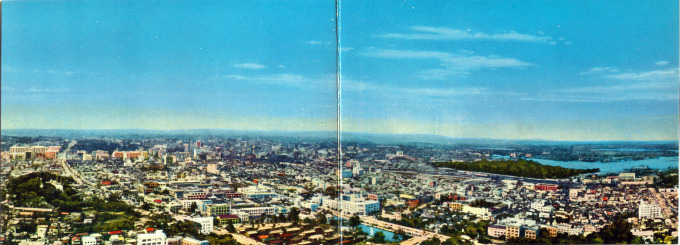
Panoramic view of Tokyo looking east-northeast from Tokyo Tower, c. 1960. The Imperial Palace grounds are at upper-left; the wooded Hama Detached Palace is at right, astride Tokyo Bay.
- Sunset at Tokyo Tower, c. 1970.
- Elevated view of Tokyo Tower, c. 1970, looking toward the Imperial Palace.
- Tokyo Tower and Tokyo Monorail, c. 1970.


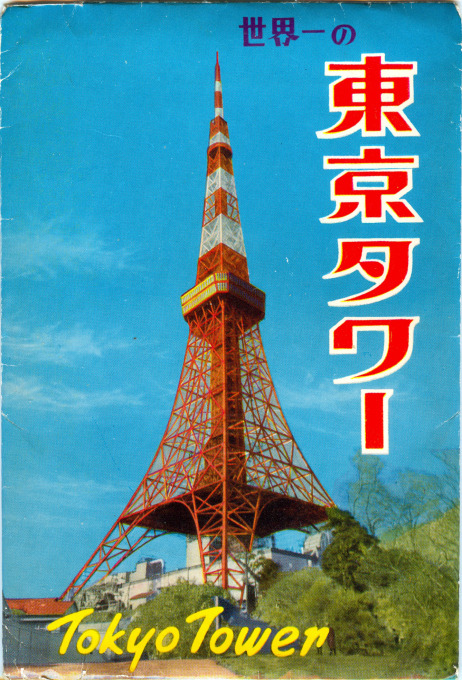
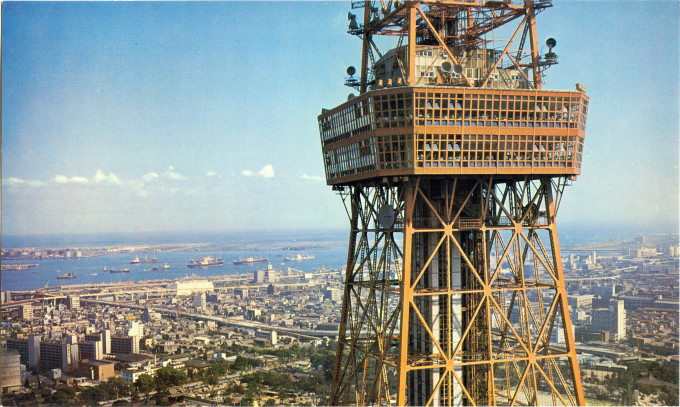
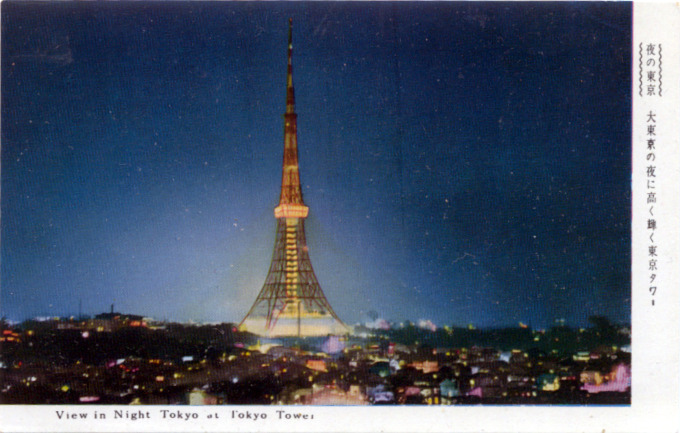
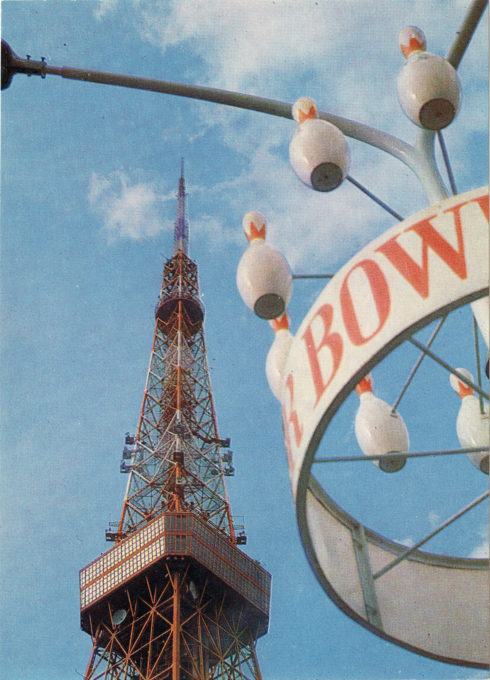
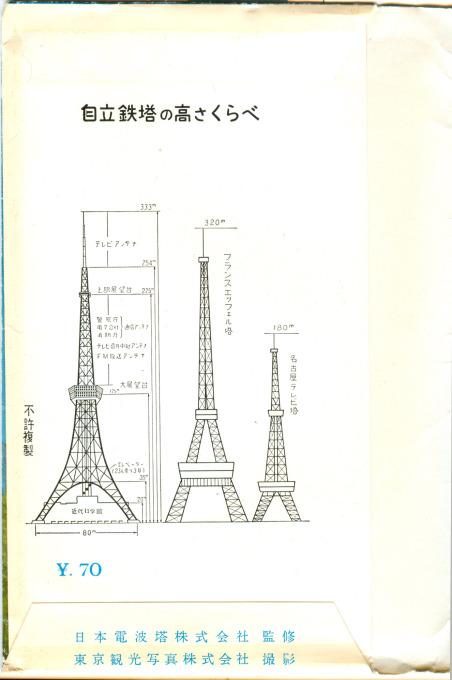
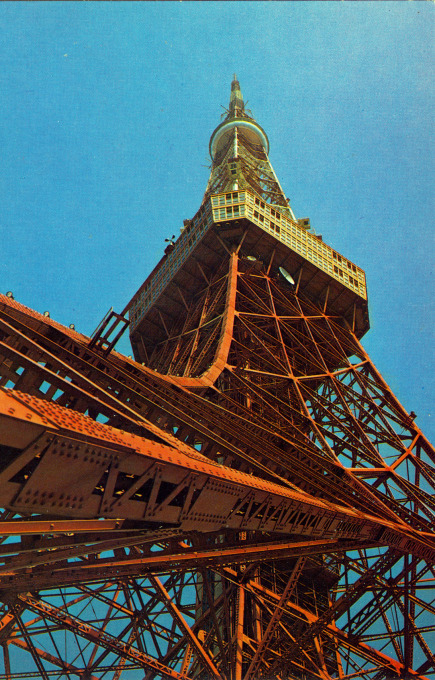
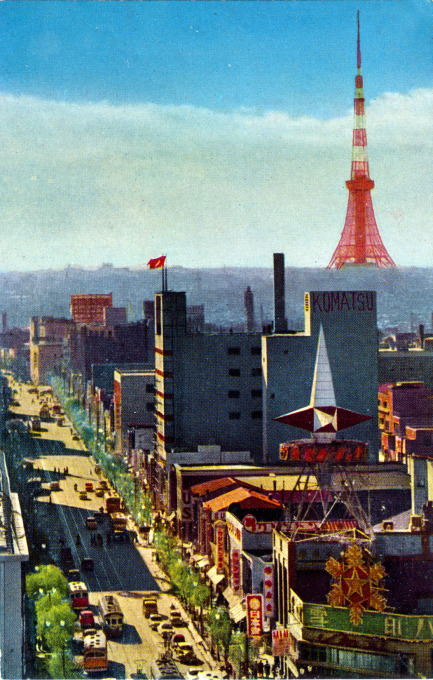
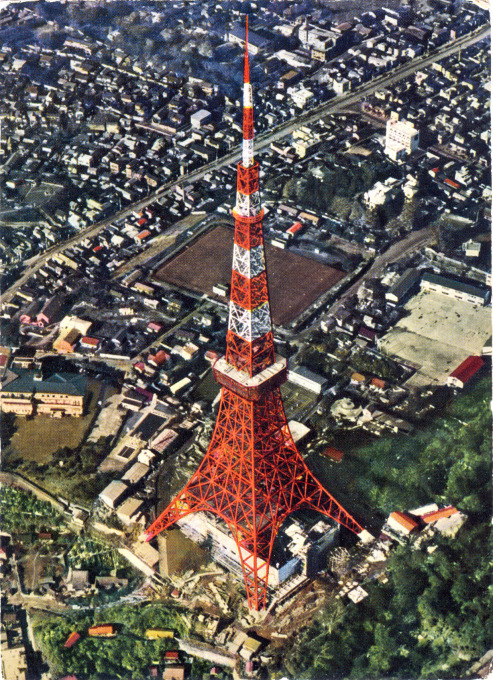
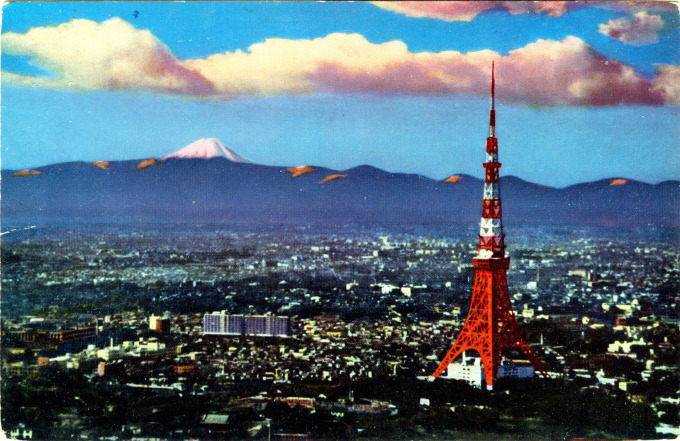
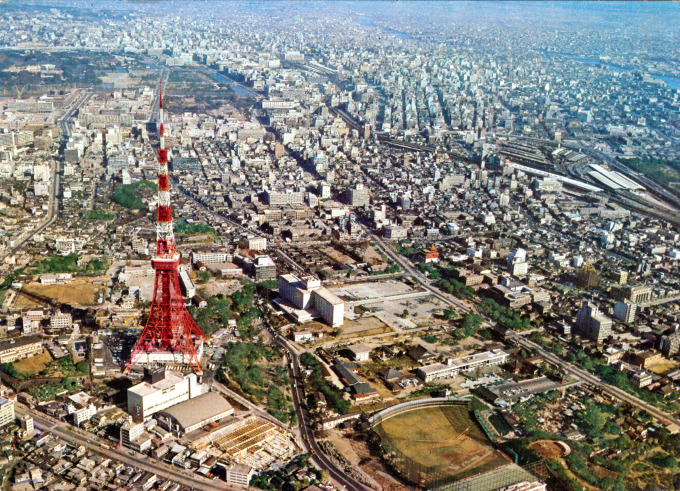
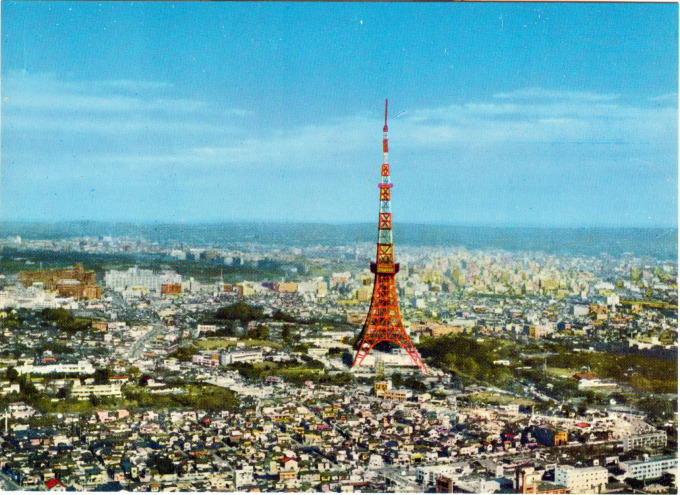
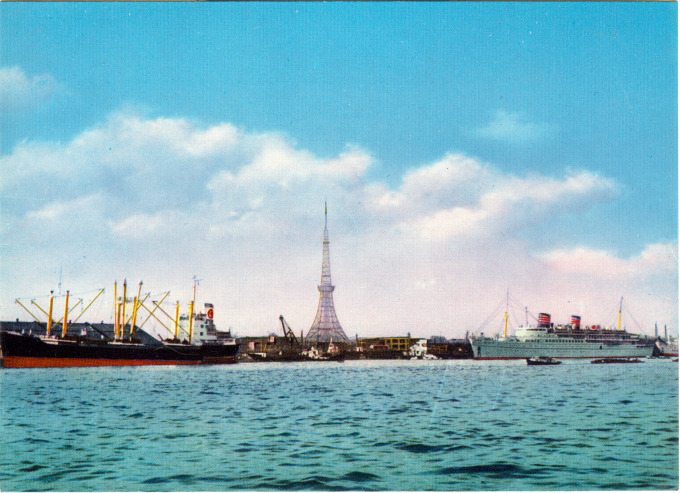
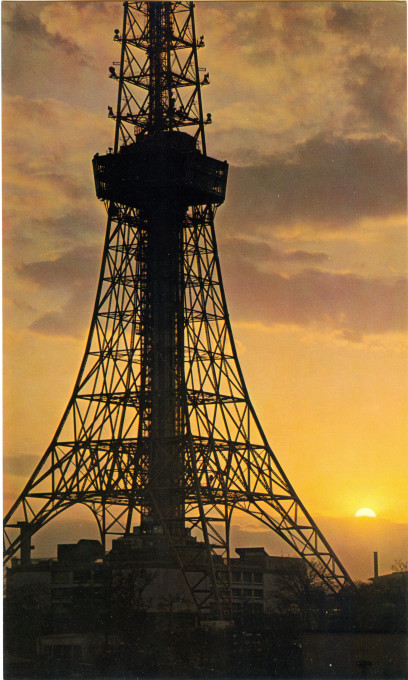
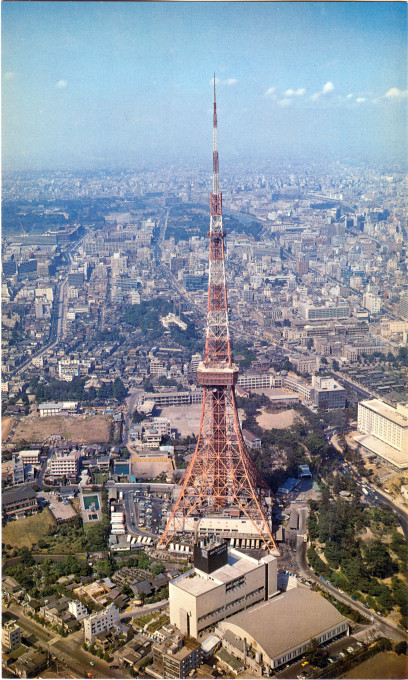
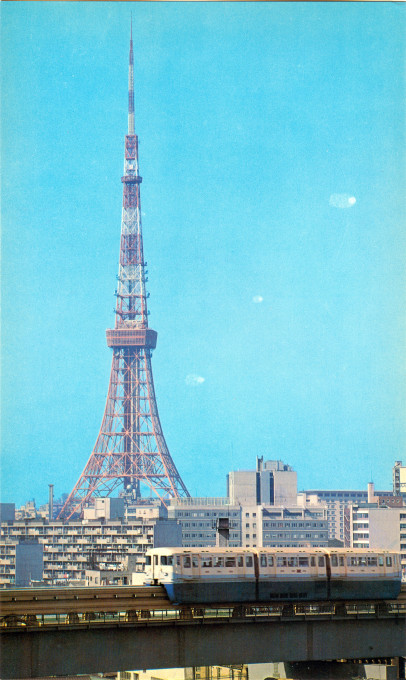
Pingback: Hotel Okura, Tokyo, c. 1970. | Old Tokyo
Pingback: Nagoya TV Tower, Nagoya, c. 1955. | Old Tokyo
Pingback: Tsutenkaku Tower, Osaka, c. 1930. | Old Tokyo
Pingback: International House, Azabu, Tokyo, 1968. | Old Tokyo